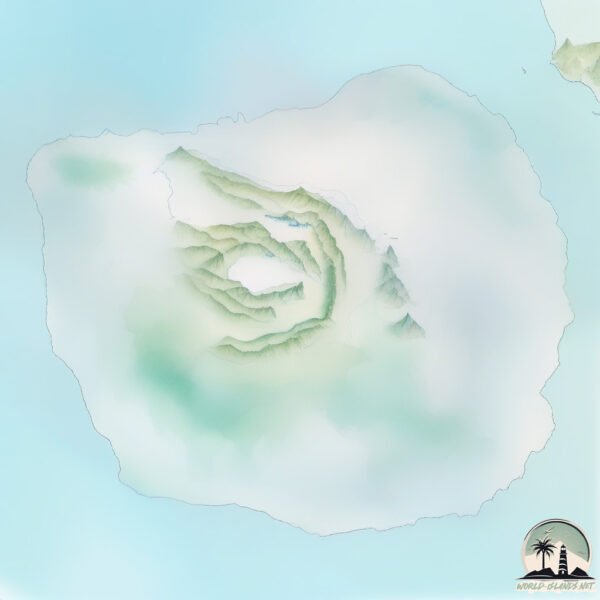Fernandina

Welcome to Fernandina, a Tropical island in the South Pacific Ocean, part of the majestic Pacific Ocean. This guide offers a comprehensive overview of what makes Fernandina unique – from its geography and climate to its population, infrastructure, and beyond. Dive into the details:
- Geography and Size: Explore the island’s size and location.
- Climate and Weather: Weather patterns and temperature.
- Topography and Nature: Uncover the natural wonders of the island.
- Infrastructure and Travelling: Insights on reaching, staying, and making the most of your visit.
- News and Headlines: Latest News.
Geography and size of Fernandina
Size: 648.2 km²
Coastline: 111 km
Ocean: Pacific Ocean
Sea: South Pacific Ocean
Continent: South America
Fernandina is a Large Island spanning 648 km² with a coastline of 111 km.
Archipel: Galapagos Islands – An Ecuadorian archipelago in the Pacific Ocean, famous for their unique wildlife and as a key location for evolutionary studies.
Tectonic Plate: Nazca – An oceanic tectonic plate off the west coast of South America. Famous for the Nazca Lines, it’s primarily known for its subduction under the South American Plate, leading to the Andes Mountains’ formation and significant seismic activity.
The geographic heart of the island is pinpointed at these coordinates:
Latitude: -0.38583386 / Longitude: -91.51281003
Climate and weather of Fernandina
Climate Zone: Tropical
Climate Details: Tropical Savanna, Wet
Temperature: Hot
Climate Characteristics: Defined by distinct wet and dry seasons with high temperatures year-round. Pronounced rainfall occurs during the wet season, while the dry season is marked by drought.
Topography and nature of Fernandina
Timezone: UTC-06:00
Timezone places: America/Chicago
Max. Elevation: 1494 m Volcán La Cumbre
Mean Elevation: 311 m
Vegetation: Shrubland
Tree Coverage: 20%
The mean elevation is 311 m. The highest elevation on the island reaches approximately 1494 meters above sea level. The island is characterized by Mountains: High, steeply elevated landforms. Characterized by both a high maximum elevation (over 500 meters) and a high mean elevation, creating rugged, mountainous terrains on islands.
Dominating Vegetation: Shrubland
Dominated by shrubs and small bushes, these areas are typical in dry, rocky, or sandy environments, as well as in regions with poor soil fertility. Fernandina has a tree cover of 20 %.
Vegetation: 8 vegetation zones – Very Highly Diverse Island
Islands in this range are ecological powerhouses, showcasing a wide array of vegetation zones. Each zone, from lush rainforests to arid scrublands, coastal mangroves to mountainous regions, contributes to a complex and interdependent ecosystem. These islands are often hotspots of biodiversity, supporting numerous species and intricate ecological processes.
Infrastructure and Travelling to Fernandina
Does the island have a public airport? no.
There is no public and scheduled airport on Fernandina. The nearest airport is General Villamil Airport, located 72 km away.
Does the island have a major port? no.
There are no major ports on Fernandina. The closest major port is LA LIBERTAD, approximately 1180 km away.
The mean population of Fernandina is 0 per km². Fernandina is Uninhabited. The island belongs to Ecuador.
The name of the island resonates across different cultures and languages. Here is how it is known around the world: Arabic: جزيرة فرناندينيا; Spanish: Isla Fernandina; French: Île Fernandina; Portuguese: Ilha de Fernandina; Russian: Фернандина; Chinese: 費爾南迪納島
Continuing your journey, Isabela is the next notable island, situated merely km away.
Ecuador is classified as Developing region: Regions characterized by lower income levels, with economies in the process of industrialization and modernization. The level of income is Upper middle income.
News – Latest Updates and Headlines from Fernandina
Stay informed with the most recent news and important headlines from Fernandina. Here’s a roundup of the latest developments.
- Eight Flags Road Tour March 2025 — Free Downtown Display Of Rare Collector Cars - Amelia Island Livingon 7 March 2025
Eight Flags Road Tour March 2025 — Free Downtown Display Of Rare Collector Cars Amelia Island Living
- Gregory Quinn Simmons Obituary (2025) - Fernandina Beach, FL - Oxley-Heard Funeral Directors - Legacy.comon 6 March 2025
Gregory Quinn Simmons Obituary (2025) - Fernandina Beach, FL - Oxley-Heard Funeral Directors Legacy.com
- Amelia Island Kickoff At Fernandina’s Main Beach — Free & Fun Oceanfront Car Show - Amelia Island Livingon 6 March 2025
Amelia Island Kickoff At Fernandina’s Main Beach — Free & Fun Oceanfront Car Show Amelia Island Living
- The Goddess of Cumberland Island - Fernandina Observeron 24 February 2025
The Goddess of Cumberland Island Fernandina Observer
- With Its Small-Town Charm and Pristine Beaches, Amelia Island Offers the Best of the Great Outdoors - Mansion Globalon 23 February 2025
With Its Small-Town Charm and Pristine Beaches, Amelia Island Offers the Best of the Great Outdoors Mansion Global
- Best Luxury Picnic and Charcuterie in Amelia Island and Fernandina Beach - Fernandina Observeron 22 February 2025
Best Luxury Picnic and Charcuterie in Amelia Island and Fernandina Beach Fernandina Observer
- This Charming Florida Island Town Has More Than Just Miles Of Sandy Shores - Southern Livingon 21 February 2025
This Charming Florida Island Town Has More Than Just Miles Of Sandy Shores Southern Living
- Architectural Treasures of Amelia Island - Fernandina Observeron 19 February 2025
Architectural Treasures of Amelia Island Fernandina Observer
- Amelia Island Book Festival Announces 2025 Schedule - Fernandina Observeron 16 February 2025
Amelia Island Book Festival Announces 2025 Schedule Fernandina Observer
- Weather Forecast and Conditions for Fernandina Beach, FL - The Weather Channel | Weather.com - The Weather Channelon 14 February 2025
Weather Forecast and Conditions for Fernandina Beach, FL - The Weather Channel | Weather.com The Weather Channel
Please note: The data used here has been primarily extracted from satellite readings. Deviations from exact values may occur, particularly regarding the height of elevations and population density. Land area and coastline measurements refer to average values at mean high tide.
